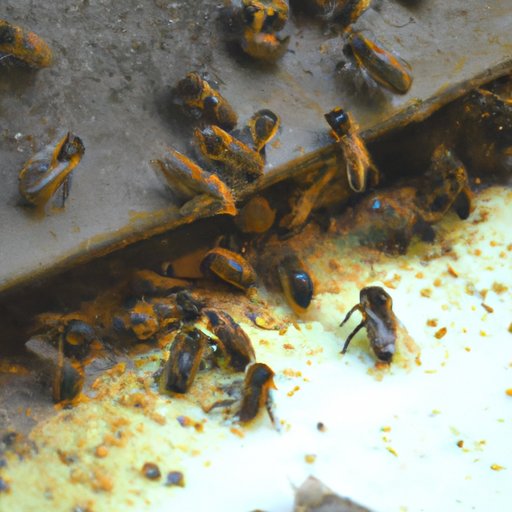Introduction
Bees are an essential part of our environment, playing a crucial role in pollinating plants and crops. Understanding the activity of bees is key to understanding their behaviour and ensuring their survival. This article will explore when are bees most active, looking at both the daily and seasonal patterns of their activity.
Examining the Daily Activity Cycle of Bees
The activity of bees is influenced by both environmental factors and internal biological rhythms. To better understand when bees are most active, we must consider both of these factors.
What Time of Day Are Bees Most Active?
Bees tend to be most active during the day, with peak activity occurring around mid-morning and early afternoon. During these times, they are able to take advantage of the warmer temperatures, which allows them to fly more efficiently and gather more food. They also use the sunlight to navigate and find flowers to feed on.
Investigating the Effects of Temperature on Bee Activity
Temperature plays an important role in determining when bees are most active. When temperatures are too low, bees become sluggish and unable to fly. On the other hand, when temperatures are too high, bees can become overheated, which can lead to death. Therefore, optimal temperatures for bee activity are between 65 to 80 degrees Fahrenheit.
Exploring the Role of Light in Bee Behaviour
Light also plays a role in determining when bees are most active. Bees have photoreceptors that allow them to detect changes in light levels. When it is dark, they become inactive and rest. As the light levels increase, they become more active, with peak activity occurring around mid-morning and early afternoon when the light levels are highest.

Understanding How Seasonal Changes Impact the Activity of Bees
In addition to daily patterns of activity, bees also display seasonal patterns of activity. These patterns are largely determined by environmental factors such as temperature, light, and weather.
Investigating the Foraging Habits of Bees
Bees typically forage for food in the morning and late afternoon, when temperatures are milder and the light levels are higher. During the winter months, when temperatures are cooler and days are shorter, bees become less active and spend more time in their hives. In the summer months, when temperatures are warmer and days are longer, bees become more active and spend more time foraging for food.
Examining How Weather Affects Bee Activity
Weather also affects bee activity. Rain and cold weather can reduce bee activity, while warm, sunny days can increase bee activity. Windy conditions can make it difficult for bees to fly, while heavy fog can limit their visibility and make it harder for them to find food.
Exploring How Long-Term Climate Change Impacts Bee Behaviour
Long-term climate change can also affect bee activity. Warmer temperatures and changing weather patterns can disrupt bee behaviour, making it harder for them to find food and reproduce. Rising temperatures can also cause bee colonies to move to new areas in search of suitable habitats.
Conclusion
In summary, this article has explored when are bees most active. We have seen that bees tend to be most active during the day, with peak activity occurring around mid-morning and early afternoon. Temperature, light, and weather all play a role in determining when bees are most active, as do seasonal changes and long-term climate change.
It is clear that there is still much to learn about bee behaviour and how it is affected by environmental factors. Further research is needed to gain a better understanding of how these factors impact the activity of bees and what can be done to ensure their survival.


